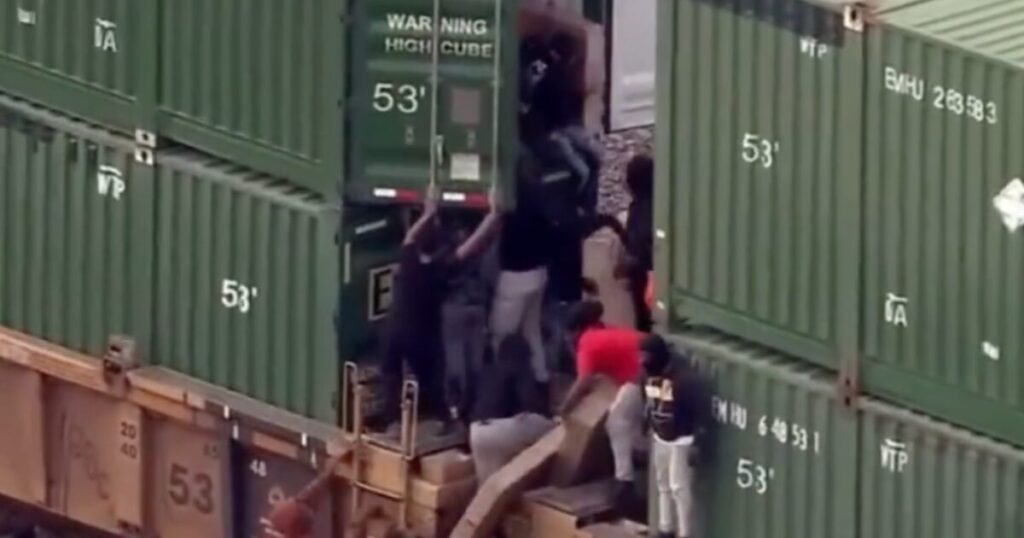On October 11, 2024, a dramatic incident of large-scale theft unfolded in the South Austin neighborhood of Chicago, captured vividly by various media outlets, including ABC Chicago. A video from the ABC Chopper 7 shows a group of thieves, estimated to be between 50 to 150 individuals, actively looting a parked freight train. The scene reveals a chaotic environment, with individuals brazenly taking items, including televisions and kitchen appliances like air fryers, from the cargo train. Witnesses described the looting as a prolonged affair that reportedly lasted for hours before law enforcement was notified.
The police were alerted to the ongoing theft, which occurred around 4 p.m. in the 400 block of North Lamon Avenue. Upon their arrival, they found that the theft was still in progress, with thieves continuing to extract items from the train. The situation exemplified a concerning trend in the area, where railway cargo thefts have become increasingly common. Witnesses further reported that despite the significant presence of thieves, it appeared that police struggled to intervene effectively at first, reflecting a level of audacity among the looters.
Union Pacific Police responded to the scene, but it took them about an hour to clear the area and contain the situation. The evident coordination and organization among the thieves drew attention and raised questions about safety in the vicinity of the train yard. The crime attracted media attention as it reflected broader issues relating to urban crime, particularly theft related to freight transportation infrastructure. This incident is viewed as symptomatic of an increase in crime in many American cities, prompting discussions on law enforcement effectiveness and public safety.
In the days leading up to this incident, reports had indicated a rise in similar thefts across Chicago, sparking concern among local residents and businesses who rely on freight services. The repeated occurrence of such crimes has led to a heightened focus on security measures needed to protect railway cargo, as well as broader discussions on socio-economic factors contributing to a visible increase in criminal activity in urban settings.
As footage of the incident circulated on social media platforms, it fueled public discourse about law enforcement’s role and effectiveness in deterring such brazen crimes. Criticism emerged regarding the police response time and the apparent lack of preventive measures that could have stopped the theft before it escalated. This incident serves as a stark reminder of the challenges law enforcement faces in combating organized theft, which often involves large groups and targeted operations that can overwhelm local police capabilities.
The widespread public and media attention this event garnered highlights not only the specific fallout of this incident but also raises broader concerns regarding urban safety and crime in metropolitan areas. Addressing these concerns will require multifaceted strategies involving enhanced police training, improved surveillance, community engagement, and perhaps reforming economic policies that might reduce the incentive for such thefts. The Chicago train looting incident is thus a reminder of the ongoing battle against urban crime, urging stakeholders to reevaluate their approaches to ensuring public safety and protecting vital infrastructure from criminal activities.

